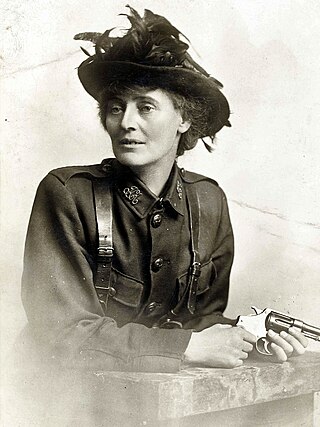
The 1997 United Kingdom general election was held on Thursday, 1 May 1997. The governing Conservative Party led by Prime Minister John Major was defeated in a landslide by the Labour Party led by Tony Blair, achieving a 179-seat majority.

Dawn Petula Butler is a British Labour Party politician who has been a Member of Parliament (MP) for Brent Central since 2015.

The 2010 United Kingdom general election was held on Thursday 6 May 2010, with 45,597,461 registered voters entitled to vote to elect members to the House of Commons. The election took place in 650 constituencies across the United Kingdom under the first-past-the-post system.

The Dunfermline and West Fife by-election was held on 9 February 2006, following the death of the sitting Labour MP Rachel Squire, on 6 January. The by-election was the first seat to change hands in the 2005 Parliament, when Willie Rennie won the seat for the Liberal Democrats, gaining it from Labour by 1,800 votes. The BBC reported a swing from Labour to the Liberal Democrats of 16.24%.

The Sex Discrimination Act 2002 (c.2) is an Act of the Parliament of the United Kingdom. The purpose of the Act was to exempt the selection of candidates in parliamentary elections from the provisions in the Sex Discrimination Act 1975 and the Sex Discrimination Order 1976 that outlaw sexual discrimination. The purposes of the Act allow political parties to select candidates based on gender in an effort to increase representation of women in British politics.
Upon the dissolution of the 39th Canadian Parliament, 65 of the 308 seats were held by women. Canada ranks 45th in the world in representation of women in the national lower house.
Blair Babes or Blair's Babes was a term sometimes used to refer to the 101 female Members of Parliament (MPs) from the Labour Party elected to the House of Commons in Labour's landslide 1997 general election victory, after images of the new prime minister, Tony Blair, with 96 of them on the steps of Church House in Westminster were widely publicised. The photographs have been called "infamous". The phrase is attributed to the Daily Mail. The term has been criticised as trivialising women in politics, and the group of women MPs to which it referred have been studied as a group.

The 2007 Ealing Southall by-election was a by-election for the House of Commons constituency of Ealing Southall, in west London. It was held on 19 July 2007.

In many countries, women have been underrepresented in the government and different institutions. This historical tendency still persists, although women are increasingly being elected to be heads of state and government.

The Liberal Democrats are a liberal political party in the United Kingdom, founded in 1988. Since the 1992 general election, with the exception of the 2015 general election, they have been the third-largest UK political party by the number of votes cast. They have 15 members of Parliament in the House of Commons, 84 members of the House of Lords, four Members of the Scottish Parliament and one member in the Welsh Senedd. The party has nearly 3,000 local council seats. The party holds a twice-per-year Liberal Democrat Conference, at which party policy is formulated. In contrast to its main opponents' conference rules, the Lib Dems grant all members attending its Conference the right to speak in debates and vote on party policy, under a one member, one vote system. The party also allows its members to vote online for its policies and in the election of a new leader. The party served as the junior party in a coalition government with the Conservative Party between 2010 and 2015; with Scottish Labour in the Scottish Executive from 1999 to 2007, and with Welsh Labour in the Welsh Government from 2000 to 2003 and from 2016 to 2021.

The representation of women in the House of Commons of the United Kingdom has been an issue in the politics of the United Kingdom at numerous points in the 20th and 21st centuries. Originally debate centred on whether women should be allowed to vote and stand for election as Members of Parliament. The Parliament Act 1918 gave women over 21 the right to stand for election as a Member of Parliament. The United Kingdom has had three female Prime Ministers: Margaret Thatcher (1979–1990), Theresa May (2016–2019), and Liz Truss (2022). The publication of the book Women in the House by Elizabeth Vallance in 1979 highlighted the under-representation of women in Parliament. In more modern times concerns about the under-representation of women led the Labour Party to introduce and, decades later, abandon all-women short lists, something which was later held to breach discrimination laws.
This is the results breakdown of the 2005 general election.

These are the results of the 2005 United Kingdom general election in Wales. The election was held on 5 May 2005 and all 40 seats in Wales were contested.

The 2021 London Assembly election was held on 6 May 2021 to elect the members of the London Assembly, alongside the 2021 London mayoral election. The mayoral and Assembly elections were originally to be held on 7 May 2020, but on 13 March 2020 it was announced the election would be postponed until 2021 due to the COVID-19 pandemic. It was the sixth election since the assembly was established in 2000. Due to the previous term being extended to 5 years, those elected will serve only a three-year term until the next election in 2024. The election was held on the same day in 2021 as other elections in the UK; the UK local elections, Scottish Parliament election, and Welsh Senedd election.

A by-election for the House of Commons constituency of Manchester Gorton was scheduled to take place on 4 May 2017, following the death of the sitting Labour Member of Parliament (MP), Sir Gerald Kaufman. It was cancelled on 20 April following the announcement of the 2017 general election. At the general election in June, most of the candidates who were due to stand in the by-election contested the seat, and the Labour candidate, Afzal Khan, retained the seat for his party with a large majority.

3,303 candidates stood in the United Kingdom general election of 2017, which was held on 8 June 2017. The deadline for parties and individuals to file candidate nomination papers to the acting returning officer was 16:00 on 11 May 2017.
A gender quota is a tool used by countries and parties to increase women's representation in legislatures. Women are largely underrepresented in parliaments and account for a 25.8% average in parliaments globally. As of November 2021, gender quotas have been adopted in 132 countries. Around the world, quotas vary greatly in their enforcement and the stage of electoral process targeted, creating three main types of quotas: legislated candidate quotas, voluntary party quotas, and reserved seats. Regardless of their prevalence, they are a controversial measure, creating debates concerning their impacts, both negative and positive.
Jeanette Ashe is a Canadian political scientist, educator, and author.












